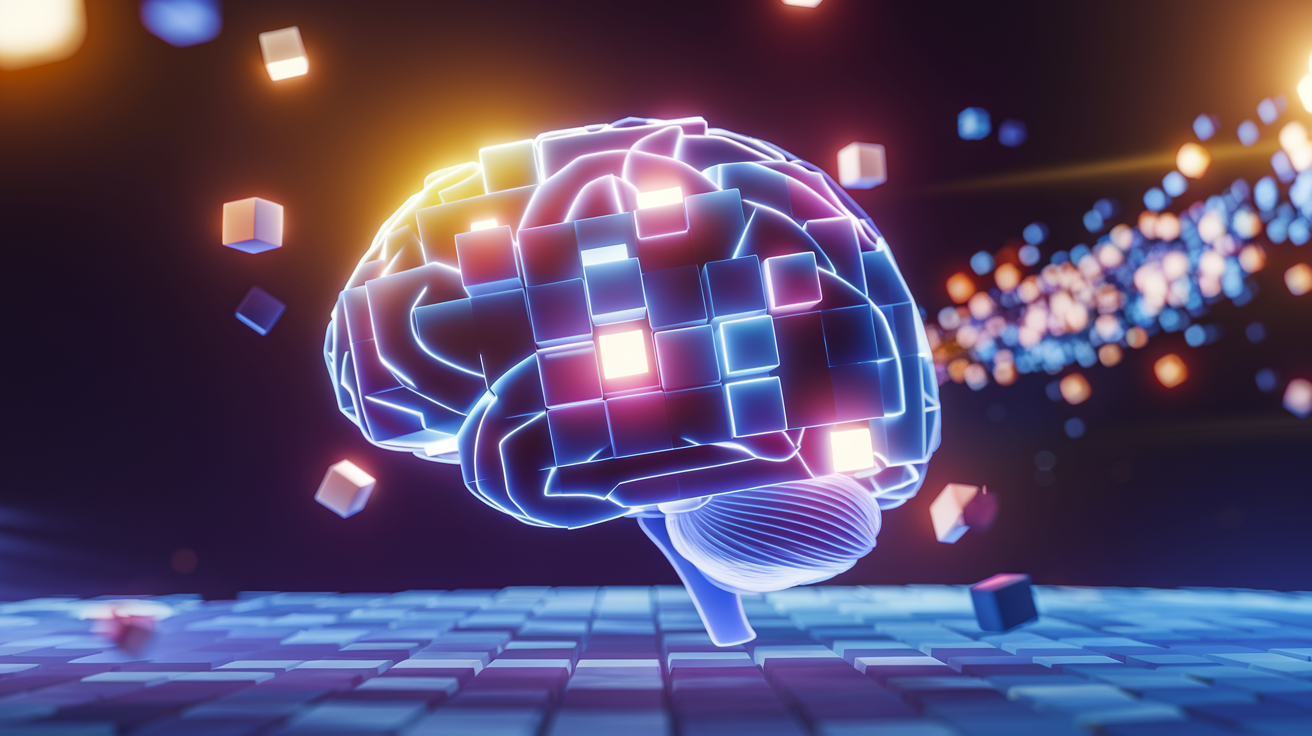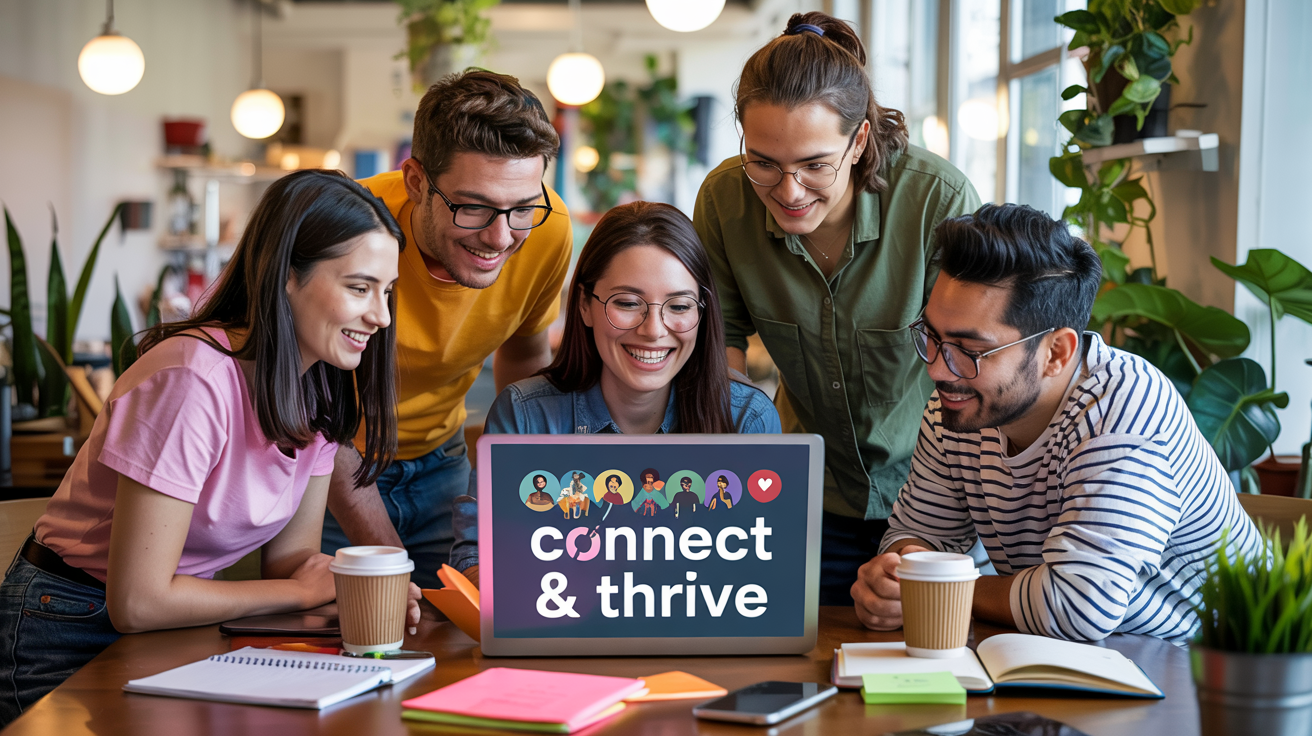Introduction
Confirmation bias – our tendency to favor information that confirms our existing beliefs – can subtly undermine our learning and decision-making. It causes us to seek out, interpret, and remember evidence in a way that validates what we already think while ignoring or discounting conflicting data. The result is often an “echo chamber” of our assumptions, which hinders critical thinking and growth. Overcoming this bias isn’t easy (our brains are wired for it to some extent), but with conscious effort, we can learn to recognize our biases and adopt strategies to think more objectively. This guide provides evidence-based techniques and habits to tackle confirmation bias, improve critical thinking, and accelerate your learning curve through open-minded and flexible thinking. Real-world examples and psychological research are included to illustrate how these methods work in practice.
Recognizing Confirmation Bias
The first step is becoming aware of how confirmation bias shows up in everyday life. For example, consider two people with opposite stances on an issue like gun control: each one tends to seek news and interpret events in a way that supports their own view. They could read the same news story yet come away with reinforced but opposing beliefs – their bias shapes what details they emphasize and what they disregard. Signs of confirmation bias include: selectively gathering supporting evidence, dismissing or avoiding information that challenges your opinions, and interpreting ambiguous facts in your favor. We also tend to surround ourselves with like-minded friends or sources, further insulating our viewpoint.
Being able to say “I might be wrong” is surprisingly difficult. Even highly intelligent people fall for this bias, sometimes with serious consequences in professional settings (e.g. misjudgments in finance, law, or medicine). A classic study showed that when people with strong opinions on the death penalty were presented with mixed evidence, they accepted anything that confirmed their original stance and found reasons to reject the disconfirming evidence – leaving each side even more entrenched. This human habit of “myside” thinking can skew our perception of reality. The key is to spot these red flags in yourself: notice if you’re only asking questions or reading sources that tell you “you’re right,” or if you feel defensive when encountering an opposing view. That awareness is critical, because you can’t correct a bias you can’t see.
Mental Strategies to Reduce Confirmation Bias
Once you recognize the bias, you can apply mental strategies to counteract it and think more objectively. Psychologists and behavioral experts recommend techniques to essentially “debias” your thinking. Here are some proven strategies:
- “Consider the Opposite” (Deliberately Seek Disconfirmation): When testing a hypothesis or belief, make it a point to check if the opposite might be true. For example, if you feel certain a project will succeed, ask “In what scenario would this project fail?” or if you believe someone is guilty, seriously consider evidence of their innocence. Actively searching for contradictory information balances your perspective. Our justice system says “innocent until proven guilty,” but in practice, people often presume guilt; researchers find that explicitly considering a suspect’s innocence increases willingness to accept exonerating evidence. In daily life, playing “devil’s advocate” for your own ideas – or having a friend do it – can reveal flaws you overlooked.
- Write Down Conflicting Facts: A powerful technique is to note any evidence that contradicts your beliefs as soon as you encounter it. Charles Darwin famously followed a “golden rule” of jotting down observations that opposed his theories immediately, knowing that “such facts and thoughts were far more apt to escape from the memory than favorable ones”. By externalizing disconfirming data (in a journal or digital note), you prevent yourself from simply forgetting inconvenient details. This habit forces you to reckon with counter-evidence and reduces the natural tendency to gloss over it.
- Broaden Your Information Sources: Make a habit of consulting diverse, credible sources – especially on topics you have strong opinions about. If you lean left politically, periodically read quality journalism from the right (and vice versa). If you always get news from one channel, sample an alternative. Seeking out different perspectives (even if they initially irritate you) is crucial to bursting the filter bubble. Research in organizational settings shows that actively open-minded thinking – a willingness to consider alternative opinions and evidence against one’s views – correlates with better judgment and less susceptibility to biases and misinformation. In other words, training yourself to “hear out” opposing views and evidence will make your own conclusions more balanced and robust.
- Pause and Reflect Before Concluding: Confirmation bias often operates on mental autopilot, so slowing down your thinking can help. Psychologist Daniel Kahneman notes that our fast, intuitive thinking (which he calls System 1) jumps to comforting conclusions, whereas slower analytic thinking (System 2) can catch mistakes. When you encounter information that immediately affirms your view, take a moment and ask: “Would I be this convinced if this evidence went against me? Am I applying the same scrutiny to all information?” A brief pause can shift you into a more critical evaluation mode, preventing knee-jerk acceptance of agreeable tidbits.
- Admit Uncertainty and Be Willing to Update: Remind yourself that no belief is a “treasure to be guarded” at all costs. Instead, treat your beliefs as hypotheses to be tested, not truths set in stone. This mindset comes from top forecasters who excel at prediction: they stay humble about their opinions and readily adjust them when new data arrives. Practice saying, “I’ll change my mind if the evidence warrants it.” Being willing to change your mind is a strength, not a weakness. In fact, actively open-minded people who welcome updating their views tend to have better accuracy in judgments, as seen in studies of “superforecasters” who outperform intelligence analysts by objectively changing opinions with new facts
Real-world evidence shows that these strategies work. In one experiment, a simple one-time training (either a 30-minute video or a 90-minute debiasing game) led to significant reductions in confirmation bias in participants, effects that lasted even two months later. The training taught them about common biases and had them practice the types of strategies above – for example, considering alternatives and getting feedback on mistakes. Even in high-stakes fields like intelligence analysis and management, debiasing interventions have improved decision outcomes. The takeaway is encouraging: we can retrain our brains to some extent, by deliberately applying these mental checks and continually exposing ourselves to a more balanced information diet.
Practical Habits and Exercises to Improve Critical Thinking
Just as muscles grow stronger with exercise, our thinking skills can be strengthened through consistent practice. Research indicates that critical thinking “builds and improves with regular practice, just like a muscle that gets stronger with use”. In other words, you can train your brain. Developing critical thinking means learning to analyze issues objectively, question assumptions, and consider multiple perspectives. Here are some practical habits and exercises to sharpen your critical thinking:
- Ask “Why?” Five Times: The Five Whys technique, originally from Toyota’s engineering practices, is a simple exercise to probe deeper into reasoning. When faced with a problem or a claim, ask “why?” repeatedly (around five iterations) to dig down to the root cause or underlying assumption. Each answer becomes the basis of the next “why.” This prevents accepting things at face value and reveals hidden factors you might otherwise overlook. It’s a way to train yourself to look beyond the superficial explanation.
- Use the Ladder of Inference: This is a mental model that helps you trace how you arrived at a conclusion step by step. Imagine a ladder: at the bottom is raw evidence or observation, and each rung is a processing step (selecting data, adding meaning, making assumptions, drawing conclusions, etc.). Climbing too fast can lead to shaky conclusions. Practice slowing down on each “rung” – ask yourself: What am I actually observing? What assumptions am I adding? By checking each stage, you can catch where a bias or error might have slipped in. This exercise builds awareness of your thought process and promotes more logical, evidence-based conclusions.
- Socratic Questioning: Emulate Socrates by systematically questioning arguments – including your own. For any claim you encounter (e.g., “Technology X will improve education”), challenge it with questions like: “What is the evidence for this? Are there exceptions? How did we arrive at this conclusion? What alternative explanations exist?” Socratic questioning forces you to break down statements and examine their foundations. It’s especially useful when reading news or research: pause and interrogate the content rather than passively accepting it. This habit improves your analytical rigor and helps you spot weak arguments or logical fallacies.
- Distinguish Facts from Opinions: In our information-saturated world, being able to tell factual reporting from opinion or speculation is critical. Make it a habit, whenever you read an article or hear a claim, to explicitly label statements as fact or opinion. For example, “The company’s revenue grew 5%” (verifiable fact) vs. “The company is doing well” (interpretation/opinion). This practice, which might be part of media literacy exercises, trains you to demand evidence for claims. It also helps you catch when someone’s personal belief is influencing how they present information. By sorting facts from value judgments, you ensure your reasoning builds on solid ground. (One exercise: take an editorial or blog post and highlight or list out all factual assertions separately from the writer’s opinions – you’ll often find the facts don’t fully support the conclusions drawn.)
- Practice Argument Mapping: Argument mapping is a visual technique where you diagram an argument’s structure – claims, supporting points, evidence, and counterarguments. This can be as simple as drawing a flowchart or outline of “because A, therefore B, which leads to C.” By externalizing an argument in this way, you can more easily see if the logic holds up or if there are gaps. It’s a practical exercise for complex issues: lay out pros, cons, and rebuttals. Seeing the anatomy of reasoning on paper (or using software tools for mind-mapping) engages your critical thinking by making the logic (or illogic) more explicit. Studies have found that techniques like argument mapping or Edward de Bono’s Six Thinking Hats – which has you examine a problem from multiple angles (facts, emotions, pessimistic view, optimistic view, creative ideas, and process control) – can significantly improve critical thinking by forcing you to break habitual thought patterns.
- Daily Reflection and Journaling: Set aside a few minutes each day to reflect on decisions you made or news you consumed. Ask yourself: “What did I believe today and why? Did I consider alternative viewpoints? What could I have done better in my reasoning?” Writing down this reflection is a powerful metacognitive exercise (thinking about your thinking). For instance, if you made a tough decision at work, journal how you weighed the options and whether any bias might have crept in. Regular reflection hones your self-awareness and helps internalize lessons, thereby steadily improving your judgment over time.
- Engage in Debates or Discussions: Nothing challenges your thinking like having to explain it to others, especially those who disagree. Consider joining a debating club, online forum, or simply having friendly debates with colleagues/friends on various topics. The aim isn’t to “win” but to practice formulating arguments and also listening to counterarguments. Through debate, you learn to spot weak points in reasoning (both in your stance and others’) and gain the ability to quickly adjust your thinking when confronted with new information. This interactive practice sharpens critical thinking and also builds your confidence in handling complex issues.
- Finally, a general habit: read widely and curiously. Expose yourself to a variety of fields and authors – science, history, philosophy, as well as current events. Cross-disciplinary knowledge widens the pool of ideas and analogies in your mind, which improves problem-solving (since you can draw connections across domains). It also reduces the chance of developing a narrow mindset. The more you learn about how the world works from different angles, the more nuanced and critical your thinking will become.
Tools and Resources for Balanced Reasoning
You don’t have to do this all alone – there are excellent resources and even apps to help cultivate balanced reasoning and open-minded thinking:
- Books for Mindset Shifts: A highly recommended read is The Scout Mindset by Julia Galef (2021). It teaches the value of thinking like a “scout” – whose goal is to see the territory truthfully – versus a “soldier” who defensively protects their pre-existing beliefs. Galef defines the scout mindset as “the motivation to see things as they are, not as you wish they were,” emphasizing curiosity and truth-seeking over comfort. This book is filled with strategies and real examples to help you become more intellectually honest and resistant to confirmation bias. Another classic is Thinking, Fast and Slow by Daniel Kahneman, which explains many cognitive biases (including confirmation bias) and urges slower, more deliberate thinking for important decisions. While simply knowing about biases isn’t a cure, Kahneman’s insights (like how we use lazy shortcuts that can mislead us) provide a strong foundation for understanding why we need to apply the strategies discussed. Thinking, Fast and Slow also encourages practical steps like engaging System 2 reasoning for big choices – essentially echoing the “pause and reflect” advice with a scientific explanation behind it.
- Critical Thinking Workbooks and Courses: There are guided workbooks that offer exercises and puzzles to build logic and reasoning. For instance, The Critical Thinking Toolkit by Marlene Caroselli is full of brain teasers and scenarios that challenge you to question assumptions and solve problems creatively (including activities like the “Six Hats” method and lateral thinking puzzles). Online courses on platforms like Coursera or edX cover critical thinking and scientific reasoning, often with practice assignments. Look for courses by universities on logic, decision-making, or even informal fallacy recognition – these can systematically increase your skill at evaluating arguments. Some employers and schools also use critical thinking tests (like Watson-Glaser) – practicing those question formats (which often involve dissecting arguments or identifying assumptions) can be a helpful self-training exercise too.
- Apps and Games: Believe it or not, certain video games and apps are designed to improve reasoning and open-mindedness. A few examples: “Cranky Uncle” is a mobile game created by a professor to teach how misinformation works and how to think critically about climate change arguments – it essentially gamifies the spotting of logical fallacies and bias techniques. Another game, “Bad News,” puts you in the role of a fake news creator so you learn to recognize emotional manipulation and biased reasoning from the inside; research shows playing such games can build resistance to misinformation. For general cognitive flexibility and problem-solving, puzzle games (like those involving strategy, pattern recognition, or adaptation to new rules) are beneficial. Even classic brain games (chess, Sudoku, Rubik’s Cube, certain strategy video games) exercise your ability to plan, adjust, and learn from failures – skills transferable to real-life reasoning. While no app can magically make you a critical thinker, they can supplement your practice in an engaging way.
- Debate and Discussion Platforms: Websites like Kialo provide a structured platform for debating topics where arguments and counterarguments are laid out in tree diagrams. Participating in or even just browsing well-moderated debates can expose you to new viewpoints and show you how strong reasoning is constructed. Similarly, forums like Stack Exchange or subreddits dedicated to Explain Like I’m Five (ELI5) encourage clear, logical explanations that anyone can understand – trying to answer questions there can sharpen your ability to reason clearly and teach others without bias. There are also argument mapping tools (e.g. Rationale, MindMup, or even using PowerPoint/diagram software) if you want a dedicated space to map out arguments as recommended earlier. These tools prompt you to enter claims, evidence, objections, etc., helping you visually balance pros and cons.
- Cognitive Bias Cheat-Sheets and Checklists: It can help to keep a “cheat-sheet” of common biases (confirmation bias, anchoring, availability, etc.) handy when making decisions. The Cognitive Bias Codex is a popular infographic that catalogues biases – simply reviewing such a list can remind you of pitfalls to avoid. When you’re about to make a major decision or you’re researching an important topic, try using a checklist: Have I considered contrary evidence? Have I consulted a source with a different viewpoint? Am I emotionally attached to a particular outcome? Pilots and doctors use checklists to avoid oversight; similarly, a reasoning checklist can keep you on track until it becomes second nature. One example technique is the “Premortem” (attributed to psychologist Gary Klein): in planning something, imagine it “failed” and ask why – listing all possible reasons forces you to think critically about potential problems that optimism or bias might have hidden. This kind of tool essentially institutionalizes balanced reasoning by making contrary thinking a required step.
By leveraging such books, games, and techniques, you create an environment that continuously nudges you toward more balanced reasoning. Many of these resources are enjoyable and inherently rewarding – you’ll likely find that being open-minded and critically engaged feels empowering as you make more sound decisions.
Enhancing Your Learning Curve with Metacognition and Cognitive Flexibility
Critical thinking and reduced bias directly feed into better learning. When you learn with awareness and adaptability, you learn more effectively. Three interrelated qualities accelerate your learning curve: metacognition (thinking about your thinking), open-mindedness, and cognitive flexibility. Cultivating these will make you a self-improving learner in any field.
- Metacognition – Learn How You Learn: Metacognition is essentially “thinking about one’s own thinking” – an awareness of your cognitive processes that allows you to regulate them. In practice, this means actively monitoring your understanding and learning methods. For example, when studying, a metacognitive learner might pause and quiz themselves: “Do I really get this concept or am I just familiar with the words? What study strategy worked for me last time and should I try a different one now?” This self-questioning leads to adjustments (maybe you realize you need to draw a diagram, or re-read a chapter, or seek an example to fully grasp an idea). Research shows that learning quality improves when students apply metacognitive strategies – because they catch misunderstandings and correct course sooner. To boost metacognition, start keeping a learning journal: after a learning session or attempting a skill, jot down what strategies you used, what worked or didn’t, and how you might approach it next time. Over time, you’ll spot patterns in how you learn best. Another technique is to teach what you learned to someone else (or an imaginary class) – this quickly reveals gaps in your knowledge and forces you to clarify your understanding, a metacognitive act. The famous Feynman Technique is based on this: explain it simply, identify what you struggle to explain, study that part more, and refine your explanation. By routinely engaging in such reflection and self-testing, you essentially learn how to learn, which makes each subsequent learning task more efficient. Metacognition also helps in decision-making and critical thinking, as you become more aware of how you’re forming judgments and can adjust in real time.
- Open-Mindedness – Stay Curious and Receptive: Actively open-minded thinking isn’t just for overcoming bias; it’s a cornerstone of effective learning. If you approach new information with a closed mind (judging ideas quickly as right/wrong or filtering through your existing beliefs), you limit what you can learn. In contrast, an open-minded learner asks, “What can I discover here that I didn’t know?” and even seeks out views that contradict their own to see if there’s merit or a lesson there. Being open-minded doesn’t mean lacking convictions; it means holding your beliefs lightly and being willing to update them when warranted. A real-world example: expert forecasters in the Intelligence Community or business often use a technique called “Bayesian updating,” essentially adjusting the probability of a hypothesis as each new data point comes in. They remain fluid rather than absolutist in their thinking. Studies of elite superforecasters found they tend to be high in open-mindedness and actively open-minded thinking, scoring high on measures of willingness to consider alternative ideas and “need for cognition” (enjoyment of thinking through complex problems). This translates to better reasoning and learning because they assimilate new evidence more objectively. You can cultivate open-mindedness by regularly exposing yourself to novel ideas or challenging questions. For instance, take up reading on a subject you know nothing about, or listen to a podcast from a viewpoint you usually disagree with – not to change your mind necessarily, but to practice understanding different frameworks. When you encounter a claim counter to your beliefs, train yourself to think, “Interesting – if that were true, what evidence would support it? What are they seeing that I’m not?” This mirrors the “scout mindset” approach of valuing truth over ego. Open-mindedness also means asking lots of questions and being okay with not having immediate answers. Children often learn so quickly because they are endlessly curious and not afraid to say “I don’t know.” Embrace that spirit: it creates a fertile ground for genuine learning rather than just confirmation of what you think you know.
- Cognitive Flexibility – Adapt and Innovate in Your Thinking: Cognitive flexibility is the mental ability to switch between thinking about two different concepts, or to think about multiple concepts simultaneously. In simpler terms, it’s how easily you can adapt your approach when circumstances change or when you receive new information. This trait is closely linked to creativity and problem-solving. People with high cognitive flexibility handle surprises or obstacles more effectively because they can shift perspective or strategy without getting stuck. In the context of learning, cognitive flexibility means if one method to learn or solve a problem isn’t working, you readily try a different angle. For example, if you normally learn by reading, a flexible approach might be to try learning by doing – such as taking on a small project – or by watching tutorials, or discussing with peers. Flexibility also involves integrating different disciplines; you might apply knowledge from mathematics to a problem in economics, or use a concept from psychology to inform your marketing strategy, etc. How to enhance this ability?
- Challenge yourself with new, diverse experiences and tasks. Research suggests that training on new skills helps people become more cognitively flexible. Something as simple as changing your routine can help – take a different route to work, use your non-dominant hand for a day’s small tasks, or cook a cuisine you’ve never tried. These “little” changes force your brain off autopilot. Additionally, activities that require multitasking or rule-switching (like certain video games or brain-training tasks) can exercise cognitive flexibility. Bilingualism is often cited in cognitive research: people who speak multiple languages show higher cognitive flexibility, likely from the mental practice of switching between language systems. While you don’t need to become bilingual overnight, the principle is to engage in mentally demanding tasks that push you to alternate between different modes of thinking.
- Embrace novelty – pick up a hobby in a domain you have zero familiarity with (art, music, programming, chess, etc.). As you struggle through the beginner stage, your brain forms new connections and learns to “learn” in different ways, boosting overall adaptive capacity. Cognitive flexibility is essentially learning agility; it’s what allows someone to apply lessons learned in one context to a brand-new context successfully. In our fast-changing world, it’s no surprise that experts say this skill gives you greater resilience and creativity in the face of new challenges.
- Pushing your cognitive boundaries: Solving novel puzzles is one way to build mental flexibility. Researchers describe cognitive flexibility as “learning to learn,” emphasizing the need to change strategies for optimal outcomes. For instance, tackling a Rubik’s Cube or an escape-room puzzle might require you to abandon your first strategy and try a completely different approach halfway through. This trains your brain to switch gears and not persist blindly when something isn’t working. By regularly engaging in such activities – whether puzzles, improvisational games, or exploring unfamiliar subjects – you enhance your ability to take on new learning challenges efficiently.
Conclusion
Improving critical thinking and overcoming confirmation bias is a journey, not a one-time fix. It involves building new mental habits – questioning more, listening better, and staying open to change. By recognizing confirmation bias in action and applying strategies like seeking disconfirming evidence and considering alternative viewpoints, you can make your thinking more evidence-based and balanced. Practical exercises, from the Five Whys to daily reflection, act as a workout regimen for your mind, steadily strengthening your reasoning muscles. Alongside these practices, leverage tools and resources: let books challenge your mindset, let games sharpen your logic, and let checklists keep you honest. Most importantly, cultivate an attitude of curiosity and flexibility. When you think about your thinking, remain eager to learn, and adapt to new information, you create a positive feedback loop – you not only learn more, but you learn how to learn better each time. Over time, you’ll notice yourself making more thoughtful decisions, understanding complex issues more deeply, and perhaps most rewarding of all, being more comfortable with the rich, nuanced truth of things rather than the comfortable illusion of certainty. As the evidence and experts suggest, confirmation bias is potent, but a well-trained, open mind is stronger. By following this guide’s strategies and maintaining an awareness of your own thought processes, you can continuously grow in knowledge, understanding, and wise judgment – for a lifetime.
Sources:
- journalistsresource.org
- verywellmind.com
- pmc.ncbi.nlm.nih.gov
- knowledge.wharton.upenn.edu
- sobrief.com
- weforum.org
- able.ac
- files.eric.ed.gov
- pmc.ncbi.nlm.nih.gov
- en.wikipedia.org






